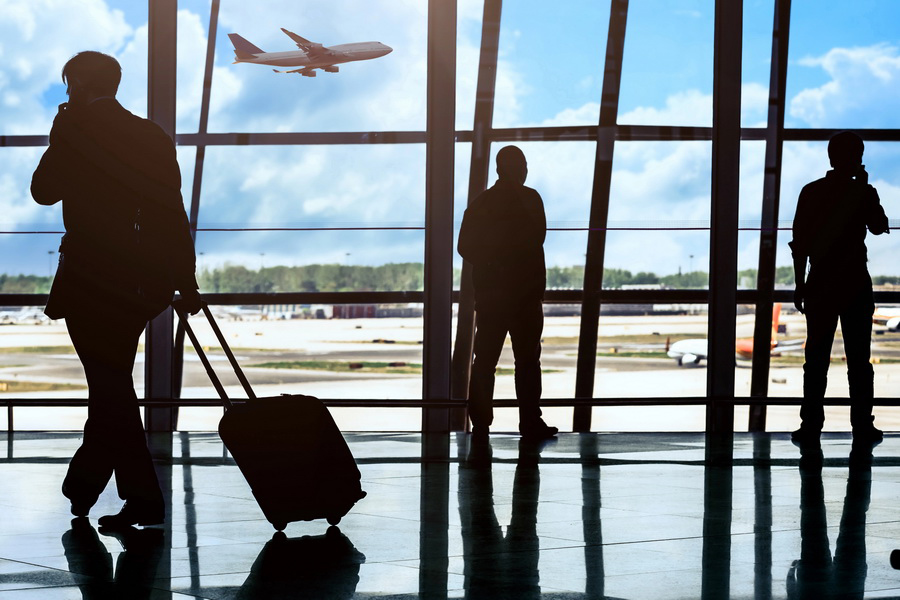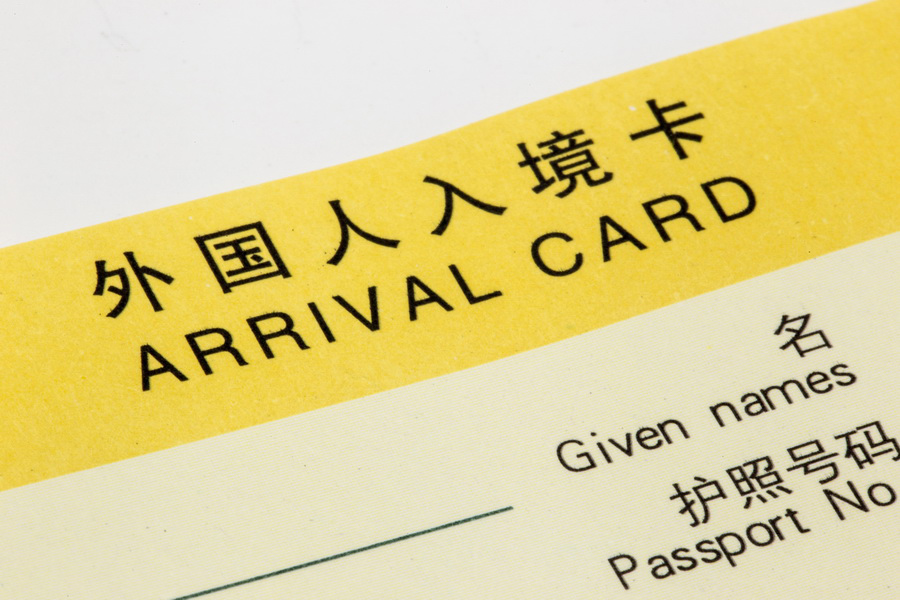
- 1. Which 55 countries qualify for China’s 240-hour visa-free transit policy?
- 2. What Is an eligible transit Route for the 240-Hour TWOV policy in China?
- 3. In which Chinese cities can I get a visa exemption for 240 Hours?
- 4. How to apply for China’s 240-hour visa-free transit in 6 steps
- 5. What do I need to apply for the 240-hour visa-free transit in China?
- 6. How is the 240 hours of layover time counted?
- 7. Useful information for those who plan on transiting through China
The People’s Republic of China’s 240-hour visa-free transit (TWOV) policy facilitates convenience and efficiency for nationals of 55 countries. It is especially useful for travellers with extended layovers, cruise passengers docking in Chinese ports, or those who want to stay in China for a short while before travelling to another destination.
Unlike the shorter, 24-hour visa-free transit in China policy, the 10-day TWOV policy allows tourists and business individuals to explore the contrast between the fascinating ancient and modern technological attractions of the “Middle Kingdom” before embarking on a journey elsewhere. Still, as simple as that sounds, there are strict rules visitors must adhere to.
Which 55 Countries Qualify for China’s 240-Hour Visa-Free Transit Policy?
Travellers from the following 55 countries are eligible for China’s 240-hour visa-free transit:
Europe
Albania, Austria, Belarus, Belgium, Bosnia and Herzegovina, Bulgaria, Cyprus, Croatia, the Czech Republic, Denmark, Estonia, Finland, France, Germany, Greece, Hungary, Iceland, Ireland, Italy, Latvia, Lithuania, Luxembourg, Malta, Monaco, Montenegro, the Netherlands, North Macedonia, Norway, Poland, Portugal, Romania, the Russian Federation, Serbia, Slovakia, Slovenia, Spain, Sweden, Switzerland, Ukraine, and the United Kingdom.
Asia
Brunei, Indonesia, Japan, Qatar, Singapore, South Korea, and the United Arab Emirates.
The Americas
Argentina, Brazil, Canada, Chile, Mexico, and the United States of America.
Oceania
Australia, New Zealand.
Note: Entry conditions apply. While your nationality might grant you access, remember that immigration officers have the final say. Always double-check the latest information through the Chinese embassy or an official government website before you travel.
What Is an Eligible Transit Route for the 240-Hour TWOV Policy in China?
Like China’s 24-hour visa-free transit, travellers must follow a clear route from Country (A) to China (B) and to Country (C) to qualify for the 240-hour TWOV. The Special Administrative Regions of Hong Kong and Macao act as different destinations in this case, independent of the mainland.
Examples of valid itineraries:
New York – Beijing – Tokyo
Madrid – Beijing – Hong Kong
London – Shanghai – Seoul
Examples of invalid itineraries:
Osaka – Shanghai – Osaka (the country of departure and destination are the same)
Paris – Beijing – Xi'an (domestic connecting flight, final destination)
You might be wondering whether you can buy a ticket to the third destination after you have arrived in the transit area. The answer is no. It is of utmost importance to confirm your existing onwards ticket with a booked seat to qualify for the 240-hour TWOV policy. Open tickets or standby tickets are not accepted.
In Which Chinese Cities Can I Get a Visa Exemption for 240 Hours?

A 240-hour visa-free transit is allowed in a total of 24 provinces across the country, with permitted stay areas and 65 eligible ports of entry and exit strictly defined by the government authorities. You can see the full list below:
| Provinces (Autonomous Regions and Municipalities) | Permitted Stay Areas | Entry/Exit Ports | |
| 1 | Anhui | Anhui Province | Hefei Xinqiao International Airport Huangshan Tunxi International Airport |
| 2 | Beijing | Beijing Municipality | Beijing Capital International Airport Beijing Daxing International Airport |
| 3 | Chongqing | Chongqing Municipality | Chongqing Jiangbei International Airport |
| 4 | Fujian | Fujian Province | Fuzhou Changle International Airport Quanzhou Jinjiang International Airport Wuyishan Airport Xiamen Gaoqi International Airport Xiamen Port (for passengers only) |
| 5 | Guangdong | Guangdong Province (exits are available at all open ports in the province) |
Guangzhou Baiyun International Airport |
| 6 | Guangxi | 12 cities in total: Beihai, Fangchenggang, Guigang, Guilin, Hechi, Hezhou, Laibin, Liuzhou, Nanning, Qinzhou, Wuzhou, Yulin |
Beihai Fucheng Airport Beihai Port (for passengers only) Guilin Liangjiang International Airport Nanning Wuxu International Airport |
| 7 | Guizhou | Guizhou Province | Guiyang Longdongbao International Airport |
| 8 | Hainan | Hainan Province | Haikou Meilan International Airport Sanya Phoenix International Airport |
| 9 | Hebei | Hebei Province | Qinhuangdao Port (for passengers only) Shijiazhuang Zhengding International Airport |
| 10 | Heilongjiang | Harbin City | Harbin Taiping International Airport |
| 11 | Henan | Henan Province | Zhengzhou Xinzheng International Airport |
| 12 | Hubei | Hubei Province | Wuhan Tianhe International Airport |
| 13 | Hunan | Hunan Province | Changsha Huanghua International Airport Zhangjiajie Hehua International Airport |
| 14 | Jiangsu | Jiangsu Province | Lianyungang Port (for passengers only) Nanjing Lukou International Airport Su’nan Shuofang International Airport Yangzhou Taizhou International Airport |
| 15 | Jiangxi | Jingdezhen City and Nanchang City | Nanchang Changbei International Airport |
| 16 | Liaoning | Liaoning Province | Dalian Port (for passengers only) Dalian Zhoushuizi International Airport Shenyang Taoxian International Airport |
| 17 | Shaanxi | Shaanxi Province | Xi’an Xianyang International Airport |
| 18 | Shandong | Shandong Province | Jinan Yaoqiang International Airport Qingdao Jiaodong International Airport Qingdao Port (for passengers only) Weihai Dashuipo International Airport Yantai Penglai International Airport |
| 19 | Shanghai | Shanghai Municipality | Shanghai Hongqiao International Airport Shanghai Port (for passengers only) Shanghai Pudong International Airport |
| 20 | Shanxi | Datong City and Taiyuan City | Taiyuan Wusu International Airport |
| 21 | Sichuan | 11 cities in total: Chengdu, Deyang, Leshan, Luzhou, Meishan, Neijiang, Suining, Ya’an, Yibin, Ziyang, Zugong |
|
| 22 | Tianjin | Tianjin Municipality | Tianjin Binhai International Airport Tianjin Port (for passengers only) |
| 23 | Yunnan | 9 cities and autonomous prefectures in total: Chuxiong, Dali, Honghe, Kunming, Lijiang, Pu’er, Wenshan, Xishuangbanna, Yuxi |
Kunming Changshui International Airport Lijiang Sanyi International Airport Mohan Railway Port |
| 24 | Zhejiang | Zhejiang Province | Hangzhou Xiaoshan International Airport Ningbo Lishe International Airport Wenzhou Longwan International Airport Wenshou Port (for passengers only) Yiwu Airport Zhoushan Port (for passengers only) |
How to Apply for China’s 240-Hour Visa-Free Transit in 6 Steps
Travellers do not automatically benefit from the 240-hour TWOV policy when arriving in China. They need to take a few necessary steps to ensure the proper procedure is followed:
- Confirm your eligibility by finding the country of your nationality among the 55 listed above and checking your itinerary and ports of entry and exit.
- Gather all required documents.
- Inform the airline at check-in that you intend to take advantage of the 10-day visa-free transit in China.
- Upon arrival on the mainland, follow the signs to the immigration desk.
- Fill out the Entry Registration Card at the immigration desk.
- Receive the 240-hour Temporary Entry Permit, which allows your entry into the city after collecting your baggage and passing through customs.
There is no application fee associated with the 240-hour TWOV in China, and the permit is issued free of charge at the airport.
What Do I Need to Apply for the 240-Hour Visa-Free Transit in China?
Required documents for the 240-hour visa-free transit in China include:
- A valid passport issued by one of the 55 countries mentioned above;
- Visa for the third country or region (if needed);
- A temporary Entry Card must be filled out. It includes personal information of the applicant, such as name, nationality, date of birth, gender, passport number, visa number (if applicable), place of issuance, flight number, and purpose of visit; and
- An onwards ticket with a confirmed seat.
If the documentation is incomplete or invalid, the Chinese authorities might deny entry on arrival.
How Is the 240 Hours of Layover Time Counted?

Compared to the 24-hour visa-free transit policy, the calculation method is quite generous for the 240-hour transit. The countdown begins at 00:00 the day after your arrival. This means that if a passenger arrives on the mainland at 17:00 pm, the 10-day transit will come into effect 7 hours later, at midnight. During the allocated timeframe, visa-free transit travellers can engage in tourism, business, exchange and family visits. This rule facilitates the maximum use of time for travellers.
Useful Information for Those Who Plan on Transiting Through China
- Working, studying or news reporting requires prior approval from the relevant authorities, as well as appropriate visas for those purposes.
- Past violations of Chinese immigration law, short passport validity, or incomplete documentation may result in refusal.
- Entry policies are subject to change according to national, regional and global circumstances. For further enquiries, you can contact the 24-hour hotline of the National Immigration Administration, available in Mandarin, Cantonese, English, Russian, Japanese and Korean, at +86 12367.
- If you have a visa for China but don’t want to use it this time, you must remember to tell the immigration officer about it.
- The maximum length of stay through this policy will be indicated in the stay permit stamped in your passport.
- Travelling through the permitted cities and municipalities is allowed within the allocated timeframe of 10 days. However, if you leave the country, the permit does not allow re-entry.
- Extensions do not apply in the case of a 240-hour TWOV. However, if, for some unforeseen circumstance, you are unable to leave the mainland within that time, you must contact the Public Security Bureau’s Entry and Exit Administration. Overstaying can result in fines, detention or entry bans.
- From the practical standpoint, it is always a good idea to keep the printed copies of your ticket and hotel reservation on hand. While it is not an official requirement, immigration officers often ask to see them.

